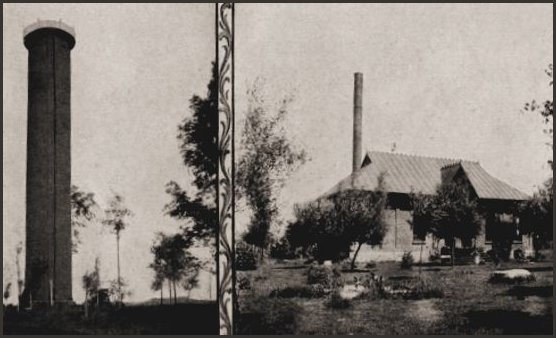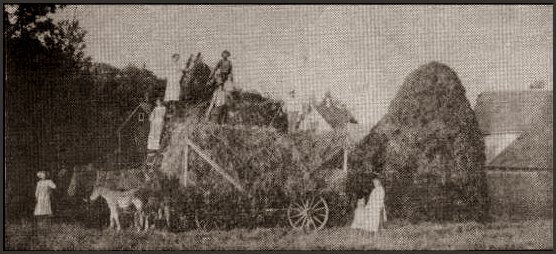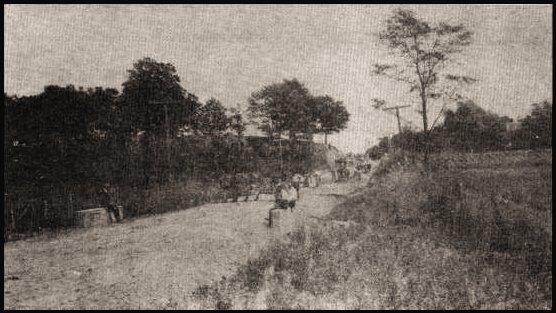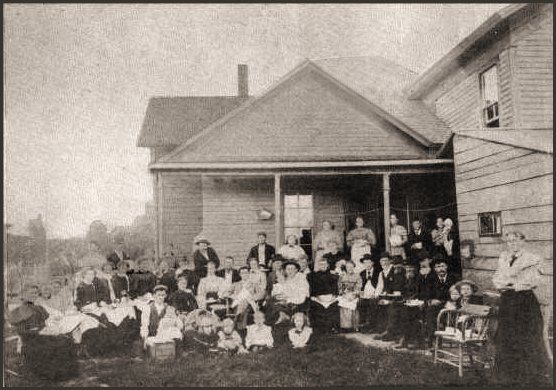|
|
|
Clark County Press, Neillsville, WI October 26, 1994, Page Transcribed by Dolores (Mohr) Kenyon. Index of "Good Old Days" Articles
|
|
|
|
Clark County Press, Neillsville, WI October 26, 1994, Page Transcribed by Dolores (Mohr) Kenyon. Index of "Good Old Days" Articles
|
Good Old Days
By Dee Zimmerman
“Owen, a Lusty Little Village” was a promotional phrase used in the early 1900s when reference was made to the community’s future.
Carved out of the timberland, its’ industry of the saw mill and box factory created much activity for its early 1900s inhabitants. It was the center of an area of two or three hundred square miles of woodland that was cleared and developed into agricultural land.
Rust-Owen Lumber Company had purchased the timberland later to be solely owned by the J. S. Owen Lumber Co. who logged the land off. The village of Owen was named after the J. S. Owen family.
That site became an important railway junction during that time with the Duluth and St. Paul divisions of the Soo Line and northern terminal of the Fairchild and Northeastern railroad, meeting at that point, connecting shipments from all directions.
The Spaulding outfit brought a camp up from Black River Falls to start a saw mill in 1893. The site was selected on account of the wealth of timber, the Popple River, the favorable lay of land and extremely rich fertile soil the intention of the promoters was not to strip the land of timber, leaving slashings as the early loggers had done, but rather to cut what they could use each season, and bring in settlers to clear the newly cut-over land and develop fertile farms where the timber had stood only a few years ago. That idea proved very successful with an average of 200 families a year locating around Owen, taking up small tracts upon which to make farms.
The village plot of Owen was laid out by C. S. Stockwell in 1905, being incorporated almost immediately afterwards. The Fairchild (Foster) and N. E. connected with the Soo Line in 1907.
In 1915 the population was 1,000. The village had an electric light plant, water works and sewer system by that time.

|
Neillsville, WI, Water Works *The above photo was not originally part of this article. It was submitted by the family of Peggy L. Walter and was taken from a postcard booklet titled, "Souvenir Letter", Neillsville, Wis. |
The saw mill and box factory employed 300. There was a large pea canning factory with a capacity of 30,000 cases, a potato warehouse, elevator and feed mill, four hotels, four general stores, a bakery, butcher shop, tailor shop, jewelry store and three barber shops. Also, there was a bank, newspaper, two hardware stores, five saloons, Danish Protestant church, Congregational and Episcopal churches, shoe store, harness shop, three doctors, theatre, bottling works and telephone company. There was a commercial club which was active in promoting community events and interests. In 1915 the president was G. D. Richards; secretary, A. H. Mohr; treasurer, A. G. Johnson. Officers of the village were: J. P. Anderson, president; aldermen H. C. Madsen, D. R. Richardson, Wm. Sutter, W. G. Boyer, a. H. Knight and Oscar Griebenow; L. B. Charbot was treasurer and G. D. Richards, clerk. At that time, plans were in the making to have a new industry, a Condensery.
Owen was proud to have the nicest hotel of the area located in their village, the Woodland – owned by the Owen Company.
Publications were occasionally made up trying to encourage people to relocate and set up in Clark County during the late 1800s and early 1900s. Land values had doubled; between 1906 to 1915 ranging from $40 to $125 an acre for improved farms, and from $15 to $30 an acre for undeveloped land.
¤¤¤¤¤¤¤¤¤¤¤¤¤¤¤
The silliest woman can manage a clever man; but it needs a very clever woman to manage a fool. – Rudyard Kipling
¤¤¤¤¤¤¤¤¤¤¤¤¤¤¤
Blessed is the man who, having nothing to say, abstains from giving in words evidence of the fact. -– George Eliot

|
A view of the platted Village of Owen in its early years |

|
The Knudt Jensen family lived on a farm in the town of Withee. The entire family was on hand to help stack hay on a summer day. |

|
Wm. Thoma, county road commissioner and his road crew as they worked on a road between Granton and Lynn. In November 1911, Clark County began working under a new system of state aid for road building. During 1912 and 1913 only grading and building of culverts was undertaken, but in 1914 and 1915 several miles of surfaced roads had been made. Eighty-five miles of roadway had been graded, fifteen miles of gravel surface, two miles of stone surfacing and some shale surfacing. The ration for funding was one-third by state, one-third by county and one-third by township. |

|
A get-together of families on an August 1897, Sunday afternoon at the Roseman residence, believed to have been in Neillsville area as the photo was taken by Brintnall Studio of Neillsville. A typical scene, everyone holding a plate of food relaxing, in their Sunday attire. |
¤¤¤¤¤¤¤¤¤¤¤¤¤¤¤
|
© Every submission is protected by the Digital Millennium Copyright Act of 1998.
Show your appreciation of this freely provided information by not copying it to any other site without our permission.
Become a Clark County History Buff
|
|
A site created and
maintained by the Clark County History Buffs
Webmasters: Leon Konieczny, Tanya Paschke, Janet & Stan Schwarze, James W. Sternitzky,
|